
Illustration by Pat Perry

Photograph by Carroll Williams
Viola Drath and Albrecht Muth in June 2001.
July 6, 2012
The Worst Marriage in Georgetown
By FRANKLIN FOER
Dinners were served in the basement. Ambassadors, generals with many stars, senior White House officials and closely read columnists — all would walk past the yellowing kitchen, which looked as if it hadn’t been updated since the Ford administration, and down a narrow flight of stairs into the dimly lighted dining room. Guests were arrayed around the table according to rank, with the most important ones squeezed in the center. Although the Old World meals could be quite elaborate — venison paté, duck in bitter orange — they were prepared and served entirely by the host, a stickler for protocol named Albrecht Muth.
Muth liked to refer to his Georgetown row house, which technically belonged to his wife, the journalist Viola Drath, as the Albrechtory. Guests at their dinners included Anne Patterson, Obama’s ambassador to Egypt; Newsweek’s Eleanor Clift; and Pierre Salinger, the Kennedy courtier, followed by his little white dog. Antonin Scalia was another guest, and Muth liked to joke about the time he asked Scalia to officiate his wedding: “Will you marry me?” Muth inquired. “Well, I’m already married,” Scalia replied. In 2006, even Dick Cheney emerged from his bunker to attend a party that Drath hosted.
The couple’s cachet had nothing to do with wealth, however. They lived frugally, mostly off Drath’s first husband’s pension. Nor was it based on their résumés. He once started a small NGO; she wrote articles for a German financial daily. What they possessed was an exquisite understanding of the anxieties of the city’s elite — and an awareness of the power of eccentricity in a city that has little of it. Drath was 44 years older than her husband, a disparity in age that was accentuated further when he referred to her as “madam.”
Albrecht Muth had his own rich lore. According to one tale, he once planted a bug in Madeleine Albright’s master bathroom on behalf of German intelligence, although the device managed to pick up only the sound of running water. Another placed him in Baghdad, working a furtive U.N. mission for Kofi Annan, or Uncle Kofi, as Muth called him. Even Georgetown neighbors who never attended his dinners speculated about the man who carried a riding crop and smoked cigars, which he kept tucked in his breast pocket as he marched past the preppy boutiques on Wisconsin Avenue each morning. After a neighbor once mistakenly referred to the riding crop as a marching baton, Muth sniffed in an e-mail, “I am not Mr. Sousa.”
On Aug. 12 last year, Muth called 911 and reported that he returned from his morning walk to find his wife splayed on their bathroom floor. A 91-year-old tumbling in a bathroom is hardly uncommon, so detectives didn’t initially investigate her death. It took the medical examiner to point out, a day later, that her scalp was bruised, her thumbnail torn and the cartilage in her neck fractured. She had been strangled and bludgeoned to death.
Drath’s murder seized the front page of The Washington Post, which was as awkwardly tangled in the story as the rest of the city’s elite. One of The Post’s columnists attended the couple’s dinners, as did the reporter who covered the case for The Wall Street Journal. Over the years, Muth flooded the in-boxes of his media contacts with messages containing his thoughts on the day’s events and knowing tidbits of insider gossip — speculations about covert operations gone awry or rumors about fights between top generals — a habit that didn’t end with his wife’s death. Four days after he supposedly found Drath’s body, Muth forwarded a note that he originally sent to officials in the Pentagon. He intimated that the police considered Drath to be the unfortunate victim of an assassin who was hunting for him. “I have to take a slain wife out to Arlington,” he wrote, “mourn her, then find her killer.”
When Muth first asked her out in 1982, Drath had been married for nearly 40 years. He was a teenage intern for a lesser-known Republican senator; she was a veteran journalist in her 60s. Muth flattered her by describing his devotion to her column, which he said he started reading in his “youth.”
The schnitzel joint he picked was said to be Henry Kissinger’s favorite restaurant in town. Muth ordered a bottle of expensive wine and, over the course of dinner, recounted the details of great battles, quoted Oscar Wilde and spoke of landing a top job in the United Nations. Although he had only recently arrived in Washington to study at American University, Muth name-dropped like a native. “He acted very entitled, and she liked that,” says Kathryn Livingston, a former executive editor of Town & Country whom Drath hired to edit her memoirs, which she never had the nerve to publish.
Because Drath only hesitantly revealed her inner life, the editing of the manuscript required that Livingston prod her with uncomfortable questions. In one of her introspective moments, Drath admitted that while she didn’t consider Muth particularly handsome, she found his appearance appealing. His family fled East Germany, just as hers had, and there was something about his Teutonic face and blue-gray eyes that reminded her of home. She was also attracted to his lust for power, which she knew could be channeled into professional success. “At first, she was dazzled by his potential,” Livingston told me.
Once upon a time, she was nearly as ambitious. After World War II, when she was in her mid-20s, her husband Francis — the deputy American military governor of Bavaria — rescued her from the ruins of Germany and transplanted her to Lincoln, Neb. Drath adapted well to her new life, even hosting a program on the local public-television channel. But she needed more action than Nebraska could provide. She began jetting off to New York to cover fashion shows for a German glossy, while her husband, whom everyone called the Colonel, took care of their daughters. “She was the husband, and he was the wife,” remembers Parker Ladd, a book editor for Scribner’s who was part of Drath’s new Manhattan circle.
On her trips, she befriended Norman Mailer, who later stayed in her house as he researched his novel “Harlot’s Ghost.” She began writing essays about German politics for Harper’s and Commentary. In 1968, the Colonel took a government job and bought the Georgetown row house. Soon enough, she could quip, “When I speak German to Henry Kissinger, he starts talking like a little boy.”
Yet for all her status and success, Drath remained deeply dependent on her husband. When the Colonel found out that he had cancer in the 1980s, she panicked about the prospect of widowhood. Her friend, the political theorist Gary Ulmen, came to stay with her following her husband’s death and discovered the extent of her helplessness. One morning, she turned to Ulmen and asked, “Do you know how to make breakfast?”
Following their schnitzel dinner, Muth largely disappeared from Drath’s life. But just months after the Colonel’s death in 1986, he began calling on her almost daily. They would drink tea and stay up arguing about politics; evenings usually ended with Muth sitting down to play at her baby grand piano. About three years into his courtship, he donned a tuxedo, carried a bottle of Champagne and proposed marriage. That she chose Muti, as she called him, shocked her friends and family. She had other suitors who were age-appropriate and respectable, but as she told Ulmen: “They are old and boring. Muti is young and interesting.”
He was also eager and pliant. Eleanor Clift remembers that “he was something like her intern.” Every morning, he raced to read the papers and then brief her on the news. He assumed the domestic responsibilities that the Colonel once performed, only with great formality. When visitors dropped by, Muth would serve them tea, take an exaggerated bow and quietly exit the room. “It looked like his next stop was Maxim’s,” Drath’s friend George Schwab, the head of a foreign-policy think tank, told me.
Drath hadn’t intended to marry a butler. Her memoir details their campaign to land him a high-ranking job. They cultivated Vladimir Petrovsky, a jowly old Soviet diplomat who ran the United Nations office in Geneva, flying to Switzerland and buying him an expensive dinner. After months of wooing Petrovsky, Muth began appearing on panels across Washington on his behalf, sharing the dais with people like Senator Paul Sarbanes and Joseph Nye, then the chairman of the National Intelligence Council. “It’s amazing how he gets into things,” Drath marveled to Ulmen, who replied, “Viola, you’re introducing him to people; it’s because he’s connected to you.”
Ulmen was a touch too dismissive. Muth could be hopelessly awkward — incapable of small talk, prone to clicking his heels — but he could also display remarkable social intelligence. Betty Gookin, a longtime friend of Drath’s, once gave him a tour of her house in the horse country of Virginia, leading him to a wall of ancestral portraits. Most visitors would half listen to a genealogical discourse, but Muth recited back her family history, drawing intricate connections. It was the same knack he had for scanning an organization and quickly learning its jargon and bureaucratic subtleties.
In 1999, Muth formed what he called the Eminent Persons Group. His vision for the group was as grandiose as its name — he would bring together a collection of prestigious international thinkers to advise the U.N. secretary general. Among others, Muth enlisted the Pakistani cricket star (and now leading presidential candidate) Imran Khan and former Defense Secretary Robert McNamara. A co-chairman of the group was former Prime Minister Michel Rocard of France. George Soros provided seed money. Although the E.P.G. didn’t quite fulfill Muth’s exalted mission, it occupied an important niche, campaigning against the proliferation of small arms, publishing well-researched reports and convening conferences in Washington and London.
The triumph of the E.P.G. didn’t just gratify Muth’s ego; it was also an act of revenge. His mother had dabbled in politics, working her way up the Christian Democratic Party. But Muth’s father, a doctor in the German Army, died weeks after his birth. For the sake of her family, Muth’s mother turned down opportunities to ascend even higher. According to Livingston, Muth felt that decision had punished him, denying him the perks and privileges that flow to powerful families. Writing to Drath’s grandson, he described the joys of breaching the elite, “where life is great, because it’s fun.” People of power, he went on, “fire at a different level of the human condition.”
To attract eminences to his group, Muth began by ordering thick stationery that he adorned with a crest of his own design. He signed the letters with an impressive title — Count Albi — which Muth claimed a distant relative who had suffered a debilitating fall from an Indian elephant passed down to him. And he operated according to some key principles that Drath described in her memoir. To score a big-name dinner guest or a favor from a V.I.P. in Washington, there was no point messing around with official channels or wasting time with midlevel functionaries. Underlings fear for their careers and are more likely to examine new acquaintances for potential peril. But there’s an unexpected naïveté among the truly powerful; they assume that anyone who has arrived at their desk has survived the scrutiny of handlers.
Michel Rocard received one of Muth’s first invitations. “I had never heard of him,” the former prime minister told me. But Rocard liked the group’s mission, and his political career needed new purpose. With Rocard on the masthead as chairman, Muth had no trouble recruiting other V.I.P.’s. When Peggy Mason, the former Canadian ambassador to the U.N., received her invitation, she quickly accepted: “Of course,” she told me, “I figured if these other eminent people were already in. . . .”
In 2005, Muth sent a flattering e-mail to Arun Gandhi, the grandson of Mahatma, who runs a center promoting nonviolence in Rochester. “He gave me the impression that he was highly connected, throwing names around like Kofi Annan, like they were buddies,” Gandhi recalls. Although he knew next to nothing about Muth, Gandhi accepted his offer to pay for a flight to Washington and to put him “in touch with important people.” When Muth arranged for Gandhi to speak at the National Press Club, one reporter from a “small unheard-of newspaper” attended the event, as Gandhi puts it. But that hardly seemed Muth’s goal. He had used Gandhi as the headline attraction for a dinner attended by “high-society people.”
Muth, in other words, perfected the methodology for his social Ponzi scheme. For parties, he would start with bait. He theorized that Drath’s ties to Nebraska’s representatives in Washington — Senator Chuck Hagel, in particular — would bring in other politicians. Muth would also approach military officials attached to the embassies, who he knew were often lonely figures in town; he understood that their attendance would help him attract foreign-policy columnists. “The whole Western alliance was represented,” according to Roland Flamini, a former Time correspondent. In a 2010 e-mail to Drath, Muth explicitly detailed his approach: “You meet someone of import, check him out, determine [if] he can be of use, you make him yours. At some point you must decide whether to run him as a useful idiot, he not catching on as to who you are and what you do.”
Before long, however, some of Muth’s colleagues at the E.P.G. began to catch on. “He came to a reception in a full morning suit, looking like a German aristocrat out of the 1800s,” Peggy Mason recalls. “People got a little nervous and started digging around.” His talk about having served in the French Foreign Legion seemed particularly absurd. By the fall of 2001, Soros stopped financing the group and Rocard resigned. “I no longer wish to work with Albrecht Gero Muth,” Rocard wrote, citing “the brutality of his working method” and his polarizing personality. “Some obscurities of his past irritate some of our interlocutors more than ourselves, and this also has its price.”
From their first date, Viola and Albrecht enjoyed provoking one another. At night, they would lie in their separate beds, arguing in German. But every so often, their disagreements would escalate. In 1992, Muth was convicted of beating Drath, the beginning of a rap sheet that hardly reflects the many lesser occasions of abuse. Once when they were staying at the Plaza Hotel, he threw her clothes into the hall and locked her out of the room. “He has all my credit cards,” she told Gary Ulmen on the phone, who rushed to the hotel and lent her cash to buy a train ticket back to Washington.
Where Drath nursed deep feelings and wrote passionately about her love for him, Muth was in the relationship for something else. He described their marriage as transactional, an example of a Washington coupling where husband and wife merge in order to aggregate their talents and social capital. When a local television reporter named Kris Van Cleave asked Muth how his marriage overcame so many obstacles, Muth replied, “Why does Secretary Clinton remain with President Clinton?”
Perhaps Drath should have suspected that he was gay earlier — he was actively having affairs with men. But once she came to terms with Muth’s sexual orientation, he did little to disguise it. He even briefly moved in with a boyfriend in 2002. “He was the boy, she was the wife,” Muth explained in an e-mail he sent to friends. “You have the one for one set of reasons, the other another, the lives were fully integrated.” They were so integrated that the boyfriend suffered the same abuse as the wife. When Muth threatened to kill him, he obtained a restraining order.
In May 2006, Drath was eating dinner on her couch while Muth sat on the other side of the room, drunk. Your daughter isn’t a lawyer, he blared to his wife, she’s a saleswoman. (In fact, she is a judge in Los Angeles.) It might have been best to let Muth rant, but Drath defended her daughter, telling Muth that he wasn’t smart enough to get into law school. According to the detectives’ report, he responded by swinging a chair at her, knocking her from the sofa and then repeatedly pounding her head against the floor. The next morning, Drath escaped to her daughter’s home and phoned 911. When the police finally arrested Muth, he left Drath behind — an exit everyone close to her hoped would be final.
Several months later, the dateline on Albrecht Muth’s e-mails began to read “Villa Zarathustra, Sadr City, Iraq.” Ever since Rocard resigned from the E.P.G., Muth had tried to revive the group. He even demoted himself to deputy executive director and bragged that Kofi Annan’s nephew, someone he called his “Ashanti blood brother,” would serve as the titular head. Muth also began peddling what he said was a plan for ending the war in Iraq. The E.P.G. would bring together the various Iraqi sects, Muth hoped — a mission that could not be completed from the comforts of Georgetown.
His dispatches were long and filled with jargon. He repeatedly apologized to his correspondents for his fatigue: “I am, to be blunt, somewhat a wreck. The eye is blurry. And I have this tremor in the left arm and hand.”
The focus of his efforts was the insurgent Moqtada al Sadr, whom he referred to either as Mookie or with the honorific Hojatoleslam. He said that he had implanted himself as an aide in Sadr’s camp so that he could act as a double agent: while he advised Sadr, he would try to steer him and his Mahdi Army away from violence.
Mookie was a vivid character in Muth’s telling. He described Sadr’s ill-fitting dentures, which caused the cleric to speak with a slight lisp. When Sadr worked himself into a rage, he would remove his false teeth — “an inclination I always discourage,” Muth wrote. While the Americans harped on Sadr’s role in murdering soldiers, Muth portrayed him as “somewhat dimwitted” and sentimental. One morning, Muth wrote, he awoke in Sadr’s compound to the sounds of a Prussian cavalry march blasting from the speakers on the minaret — which Muth interpreted as a loving tribute. From a terrace, he watched as “the honor guard performed, in near perfection, the exercises of Frederick the Great I taught them. The goose steps emanating straight at the waist.”
Muth’s e-mails reached the in-boxes of the State Department and National Security Council officials who covered Iraq. He sent the responses he claimed to receive from these officials far and wide, although he took pains to scrub their names. These notes often chastised him. “I cannot sufficiently stress how dismayed we are,” one official lectured.
In his missives Muth assumed the persona of a world-weary freelance operator, comparing himself with T.E. Lawrence. He enjoyed angering the inept Americans, who couldn’t appreciate all the ways he saved their bacon. There were others who shared this assessment. The former Pakistani ambassador to Iraq, a recipient of Muth’s e-mails, wrote a column in The Dawn newspaper that credited Muth with restraining Sadr: “Perhaps [Muth] had been inspired by the sterling example of the Iron Chancellor, Otto von Bismarck, who welded modern Germany.” When Muth forwarded this article to his friends, Eleanor Clift replied: “This is an excellent piece with a perspective that is right on target and gives credit where it’s due.”
While Muth wrote about reconciling Iraqi factions, he achieved another feat — reconciliation with his wife. “She had a blind spot,” Kathryn Livingston says. “He was her weakness, her obsession, her addiction.” Just as Drath finished her memoir of their relationship (working title: “A Thoroughly Muddled Marriage”), Drath called Livingston to tell her, “I’m going to need a new ending.”
Muth began forwarding his correspondence with Drath, hoping to demonstrate their return to normalcy. In the fall of 2007, he described his preparations for returning home and asked permission to bring along the Iraqi man who tended to him in Sadr City. “Having the comfort of a manservant, 24/7, is the one luxury this aging militiaman can afford himself,” he pleaded. “He’ll be paid for by the Mahdi Army.”
The manservant never materialized in Washington, and the note of gratitude he supposedly received from George W. Bush — “I wished you finally took citizenship” — was a touch too familiar. “When I talk to Albrecht, I’m not sure if he’s in Iraq or next door,” Drath told George Schwab. It didn’t help Muth’s credibility that when she answered his calls, the caller ID showed the number of a hotel in Miami, where records show he was employed as a desk clerk from 2006 to 2008 — the very same period he claimed to be at the Villa Zarathustra.
There’s a long history of fabulists who have ascended Washington’s social pyramid. There was the lobbyist Edward von Kloberg III (the “von” was an affectation, as was the title of baron he used and the silk-lined capes he wore), whose motto was “Shame is for sissies.” Starting in the 1980s, he specialized in representing autocrats like Saddam Hussein and Nicolae Ceausescu. In 2005, he killed himself, plunging from the walls of the Castel Sant’Angelo in Rome. Before Kloberg, there was Craig Spence. In 1989, Time dubbed him “Washington’s Man From Nowhere,” because he never explained the genesis of his wealth. While guests like Ted Koppel and William Safire attended Spence’s parties, he eavesdropped on their conversations with microphones and two-way mirrors hidden in his home. Dressed in a tuxedo, he committed suicide at the Boston Ritz-Carlton, after his enormous expenditures on male prostitutes were exposed. Then there was the pioneering work of Steven Martindale, who legendarily invited Alice Roosevelt Longworth and Henry Kissinger to his home by telling each that he was giving a party in honor of the other.
Washington’s susceptibility to fakery explains how Muth could continue living his Iraq fantasy. Although there is no evidence — no photos, no sightings — that he ever set foot in Iraq, when he returned to Georgetown, he began walking its streets in an olive uniform and a red beret. “I saw him in uniform at the Safeway talking about Sadr,” Roland Flamini recalls. His e-mails began appearing with the signature “Albrecht Muth, Staff Brigadier General.”
This would have been ridiculous, except that he increasingly spent time in the company of bona fide Iraqi generals. Baghdad’s military attaché included him in public gatherings. When Gen. Nasir Abadi, the vice chief of staff of the Iraqi Joint Forces, came to town, he attended a lavish dinner, which Muth hosted in his full regalia. “They were treating [Muth] as if he held some kind of significant rank,” George Schwab remembers.
Several Washington wise men treated him with the same respect. Thomas Pickering, who served in nearly every diplomatically knotty post in the State Department, responded to one of Muth’s Baghdad dispatches: “Thank you for your fascinating reports. They are most welcome.” When Muth asked him to contribute a quote to his Wikipedia page, Pickering — who provided me with hundreds of Muth’s e-mails — obliged: “To the extent Muth has been successful in aligning the Sadrist JAM [Mahdi Army] with the U.S. Army, and the Sadrist movement with U.S. interests, and there is some evidence for that, he has made a major contribution.”
Three years ago, Pickering redeemed the favor Muth owed him for the blurb. His friend W. Robert Pearson, the former ambassador to Turkey, runs a Washington-based humanitarian group called International Research and Exchanges Board. The Iranians had charged one of its program administrators with espionage. Pickering offered Muth’s help: “I have a lunatic friend who pretends to have relations with the Mahdi crowd,” he remembers telling Pearson. “I’ll ask Albrecht if he can exert any influence.” Muth reported back that he had relayed the message. “Mookie is praying for her,” he wrote. When the Iranians eventually released the administrator — a gesture that was most likely intended to remove unwanted scrutiny leading up to Mahmoud Ahmadinejad’s re-election — Muth was quick to claim credit. “Thanks again for once more being a miracle worker,” Pickering wrote.
One of Muth’s miracles was an event he orchestrated called Iraq Liberation Day — and because Muth loved nothing more than a good acronym, he gave it the full name of National Observance of Iraq Liberation Day, or NOLID. On a brisk April day in 2010, Iraqi and American brass, joined by mothers of fallen soldiers, gathered at Arlington National Cemetery for speeches and the laying of wreaths. The pictures from that celebration show Muth in his customary role — off to the side, ensuring that the wreaths were laid just so.
Qubad Talabani, the son of the Iraqi president and the Kurds’ official representative in Washington, delivered the keynote address. At the end of his speech, he announced that the next year’s celebration would take place in Kurdistan. When Talabani extended the invitation, an impromptu gesture of generosity, he had little reason to anticipate the intensity of Muth’s reaction. A wave of memos arrived in his office, and Muth quickly scheduled a meeting. When Muth came dressed in uniform, Talabani couldn’t resist asking about his biography. “He starts telling me stories about how his uncle was the deputy chairman of the East German intelligence and through that they supported the Iraqi security services and helped build Saddam Hussein’s intelligence network.”
This narrative was horribly calibrated. Hussein, after all, had waged a genocidal campaign against the Kurds. As Talabani stared uncomfortably at his aides, Muth described how he wanted to invite the enemies of the United States — the Taliban, the Mahdi Army — to Kurdistan. Once he gathered them, he would launch the mother of all peace processes. Talabani interrupted before he could finish. “Good luck to you,” he said. “But we want no association with you, the Taliban, the Sadrists.”
The Iraq Embassy initially considered Muth harmless. He organized lovely parties for visiting dignitaries. It was touching that Muth admired the Iraqi Army enough to wear its uniform (or rather, what appeared to be a hybrid of Iraqi and Jordanian secondhand components). But the embassy caught wind that Muth had gone to the Pentagon, dressed in his uniform, handing out invitations to Iraq Liberation Day. A party costume was one thing, carrying this charade into the inner sanctum of the U.S. military was quite another. The embassy strongly urged its employees to avoid dealing with Muth and asked the F.B.I. to investigate him.
In September 2010, the State Department received an anonymous fax containing a diplomatic dispatch that a mole had sent to the editors of WikiLeaks. Investigators from the department quickly dismissed the fax as an uninteresting clip job. But as a matter of protocol, they phoned the house that sent the fax. When Viola Drath answered their call, she instantly fingered her husband as its author. Although the agent couldn’t be sure, he thought that he heard “a commotion” on the other end of the line, he later told the police. The phone went dead. He and a partner armed themselves and quickly drove to the house on Q Street, but there was no response to their knocking.
When the agents later arranged to see Drath, she insisted that they meet anywhere but her house. She arrived at a restaurant wearing dark glasses, which she didn’t remove until asked by the agents. Although Drath claimed that her black eye resulted from a collision with a banister, she also told the agents that she feared for her safety. Could they deport her husband? “She was terribly worried about his anti-Americanism and his vitriol,” George Schwab remembers. “She told me, ‘If something happens, you will know who perpetrated the deed.’ ”
During her years with Muth, Drath’s social world slowly contracted. Guests flooded her home in response to Muth’s invitations, but she lost touch with old friends. “I have a terrible conscience about the fact that we stopped seeing her,” says Richard Gookin, the former associate chief of protocol at the State Department. “We didn’t invite her over, because we feared that he would come along.” Muth’s embarrassments were mounting. The pastor at her church barred him from the building. The German Embassy axed him from its guest list, for fear of his drunken behavior, and curtailed its dealings with her.
Muth no longer left the house much, except to smoke his dime-store cigars. During the day, he lounged on the couch, writing memos on his laptop and collecting details that might help him maintain a credible front. At night, he often drained a bottle of Madeira and read the English-language press in Asia so he could send e-mails that presaged the next morning’s stories about Iraq. Drath knew that he kept careful tabs on her e-mail account — and that he would send notes under her name. One day, while Muth was out, she called a young friend and asked him how she could set up a new address. But she was 90 years old and quickly surrendered to frustration.
Even though she was usually only a room away, Muth sent lengthy, nasty notes to her via e-mail. He dismissed her professional accomplishments as “fluff,” and he gave himself full credit for all the late-career accolades she received. One note boasted about his “cunning,” which he illustrated with an old story: “George Soros, who financed E.P.G., also told [the French ambassador] that I’m ‘the type of man who would have closed the oven door behind him at Auschwitz.’ He meant it as a compliment, he told the ambassador. I pleaded guilty as charged.”
One afternoon last summer, Muth arranged a date with a Pakistani man he met on Craigslist. Perhaps out of deference to his companion, who didn’t drink, Muth initially ordered a virgin cranberry spritzer. But as the evening progressed, Muth’s drinks grew more potent and his behavior more belligerent, according to affidavits obtained by the police. When the pair stopped by a small gathering at a friend’s house, Muth expressed his desire for dinner so emphatically that he grabbed another guest to drive home his point. By the time he staggered home, at 10 p.m., he had difficulty stringing together sentences.
The next morning — the same morning Muth called 911 to report his wife’s death — Muth’s friend wrote him an e-mail saying that they couldn’t meet again if Muth was “going to be that drunk.” Muth replied that he had no memory of the evening.
When homicide detectives met with Muth the next day, they asked about the scratches on his forehead — a query, the detectives noted, that left him visibly shaken and caused him to suddenly recall that he had slammed his head into his kitchen door. Muth also claimed that he never touched his wife’s corpse. But when the detectives told him that they had uncovered traces of his DNA on her body, he admitted that he touched her hand.
Later, in an interview room at the department’s homicide branch, a detective asked Muth how intruders could have entered his home. He replied, “It’s your job to investigate, not mine.” And what about the age difference with your wife? It was “a marriage of convenience,” Muth shot back.
The detectives told Muth that they were taking a break and surreptitiously watched him from the other side of the wall. He rubbed his face and muttered to himself. A few minutes later, a detective returned to the room and handed him a cup of coffee. “It doesn’t look good,” Muth blurted.
It took the police four more days to collect the evidence to arrest Muth. During that period, they forbade him from entering his home, now a crime scene, so he slept in a Georgetown park wearing a perfectly tailored houndstooth blazer. Muth never had much money — he received an $1,800 monthly allowance from Viola — but he dressed as if he had means. When he stood before a judge in a preliminary hearing, he wore his orange jumpsuit with an upturned collar, an unlikely touch of St. Tropez in Superior Court.
During his first appearance in court, he complained that corrections officers wanted him to wear underwear: “[I] am a serving officer in the Iraqi Special Forces,” he said. “We don’t wear underwear.” During his second appearance, last November, he announced that he would serve as his own attorney and that he would begin “an unlimited fast,” which he vaguely justified as an imperative of his faith.
Muth had only recently become Catholic. Antonin Scalia, he claimed, had sponsored his conversion, a perfect Washington detail — and one that a Supreme Court spokesman has denied. On Day 53 of his fast, Muth instructed the court that “under no circumstances whatsoever am I to be given any medical treatment.” In other words, he seemed to be following the grim fate of Edward von Kloberg and Craig Spence, his fellow Washington fabulists.
When doctors pleaded with him to eat, Muth told them that he was following orders from the Archangel Gabriel. They needn’t worry about his ability to survive, he said. He later compared himself to a camel and then to Jesus. By early February, the Department of Corrections transferred him to the United Medical Center, which had greater capacity to deal with his extreme dehydration and starvation, although doctors now regarded his condition as “extremely grave.”
Then, just as it seemed the government would have to forcibly feed him, he resumed eating. The next day, according to court testimony, his doctor, a squat, balding man named Nader Marzban, paid him a 6 a.m. visit. As Marzban entered the room, Muth bellowed, “I want to jump up and shake you, because I’m not sure you’re real.” The doctor calmed Muth with a touch of his hand. “You know me,” he said. As Muth became less frantic, he told Marzban that he was a general in the Iraqi Army, recruited by the prime minister to help build a dictatorship.
The psychiatrists who studied Muth for months wavered in their opinion of their subject. Some evidence suggested mental illness; other signs hinted that he might be feigning his condition. At the end of April, the doctors concluded that while Muth might eventually recover his mental health, he was for the time being unfit for trial.
Marzban had difficulty talking about his patient in such cold terms. When he described Muth, his voice carried both the anxiety and compassion he felt for his patient. In the hospital, he pleaded with Muth to restrain his self-destructive impulses, and he pressed him to mount a more serious defense in court, even if professional ethics should have probably dictated that Marzban steer clear of discussing the case.
“If they convict you, you’re going to be in jail for years,” he pleaded.
“God will take care of that,” Muth replied. “I don’t need to worry about it.”
Franklin Foer is editor of The New Republic and a Schwartz Fellow at the New America Foundation.
Editor: Greg Veis
Copyright.2012. The New York Times Company. All Rights Reserved
 Bentley have sold many Continental models over the years. The luxury coupe is often snapped up by footballers, celebrities or just people with a little too much money. Despite the company the car keeps it is a brilliant and a very capable machine. The Continentals latest incarnation offers more power but less weight, not to mention a V8 option. But let’s be honest here… It is the GT Speed variant we have all been waiting for.
Bentley have sold many Continental models over the years. The luxury coupe is often snapped up by footballers, celebrities or just people with a little too much money. Despite the company the car keeps it is a brilliant and a very capable machine. The Continentals latest incarnation offers more power but less weight, not to mention a V8 option. But let’s be honest here… It is the GT Speed variant we have all been waiting for. propel the car to 205MPH. This British brute also churns out a biblical 590lb-ft of torque aiding it in a 0-62MPH sprint of just 4 seconds. Stiffer suspension, sharper steering and a retuned gearbox complete the package. The GT Speed will cost you £160,000 making it £20,000 cheaper than the recently unveiled Vanquish from Aston Martin. Though this is more of a sledge hammer to the Aston’s elegant cheese knife, there is no doubt that Bentley are looking to be very competitive.
propel the car to 205MPH. This British brute also churns out a biblical 590lb-ft of torque aiding it in a 0-62MPH sprint of just 4 seconds. Stiffer suspension, sharper steering and a retuned gearbox complete the package. The GT Speed will cost you £160,000 making it £20,000 cheaper than the recently unveiled Vanquish from Aston Martin. Though this is more of a sledge hammer to the Aston’s elegant cheese knife, there is no doubt that Bentley are looking to be very competitive.





























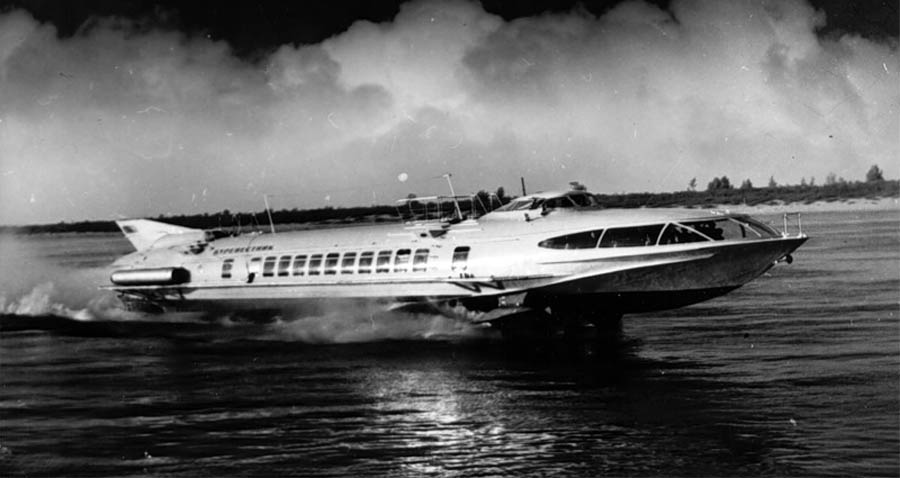




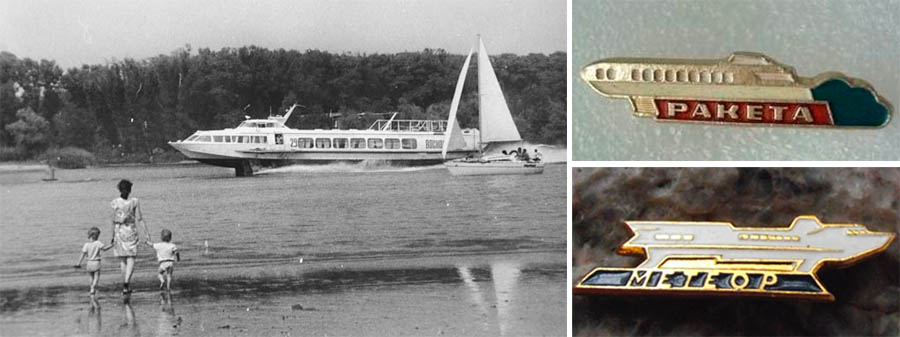





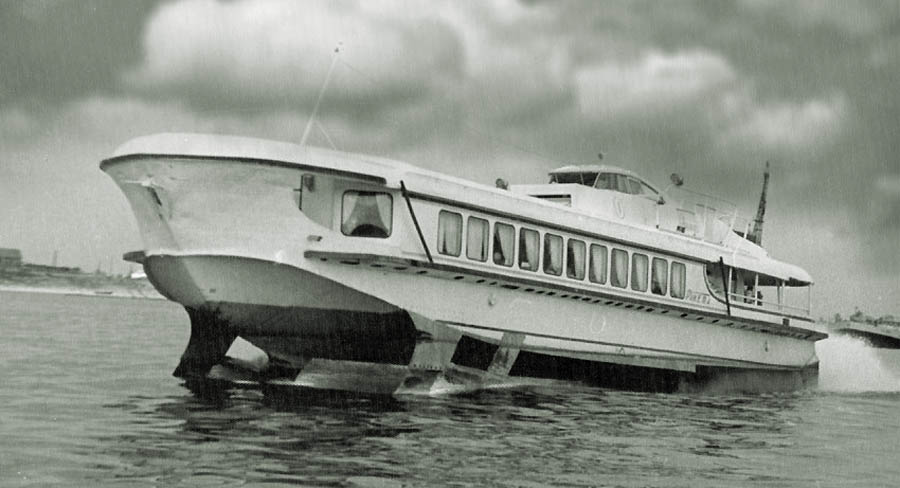






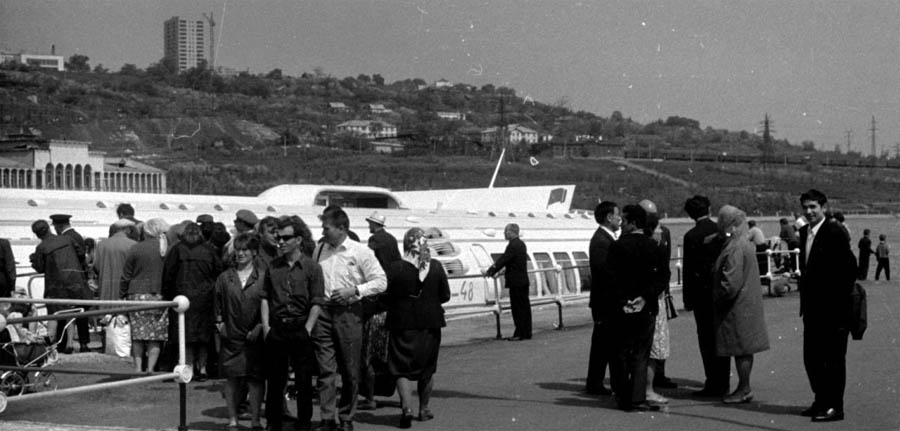

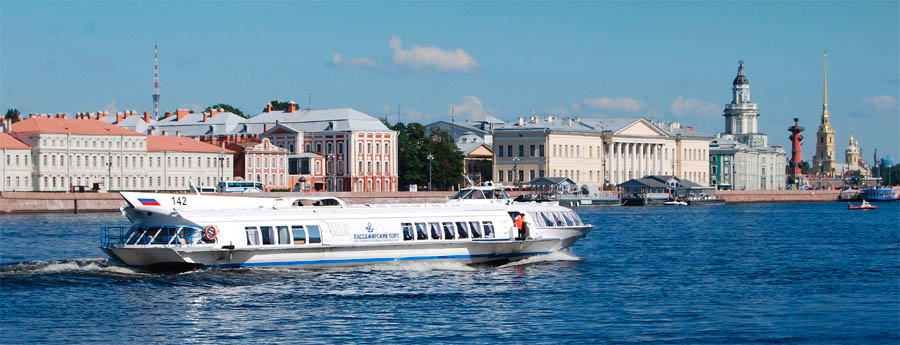












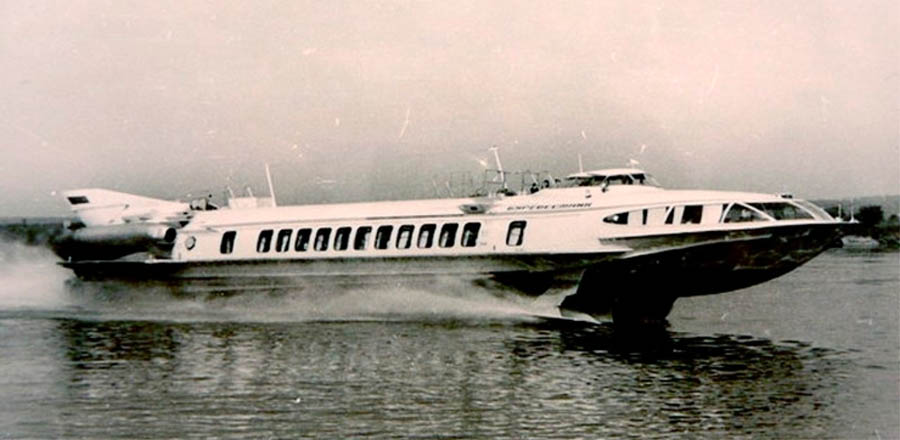


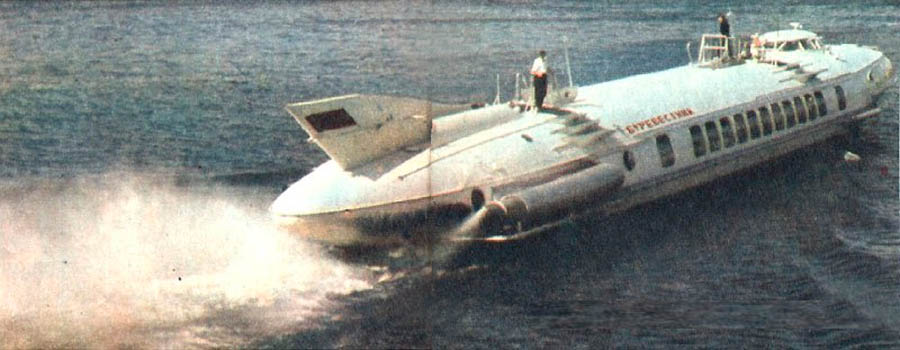










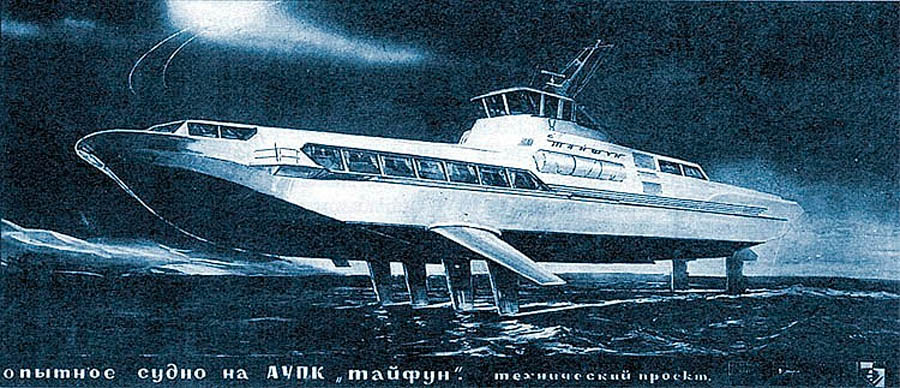

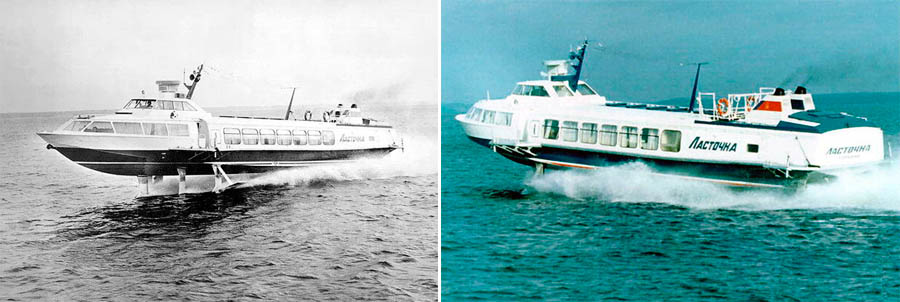



















Recent Comments